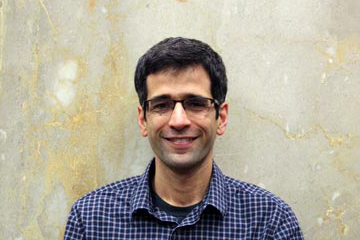How do large-scale infrastructure projects affect forests rich in biodiversity but under threat? New AidData research finds that the answer depends to a large degree on the forest protection regime in place: in some cases, forest loss actually slows in areas with projects, but these effects reverse when forests are not adequately protected by the host government.
To discover the true impact of Chinese development activities on forest health in ecological hotspots in Cambodia and Tanzania, AidData carried out a geospatial impact evaluation (GIE) that identified how forests in those countries changed when exposed to infrastructure projects.
| On October 14th, 2016, AidData's Executive Director, Dr. Bradley Parks, shared findings from this study at the China-Africa Research Initiative (CARI)'s annual conference at Johns Hopkins SAIS. Watch the recording online.
We first merged newly collected, geo-referenced aid data on Chinese development projects with high-resolution, publicly available satellite data on forest cover change and a battery of other environmental variables. Then — by comparing changes in forested areas near development projects to areas that did not have projects but were otherwise similar — we quasi-experimentally tested the extent to which proximity to active infrastructure projects led to changes in forest loss. The dataset covers 26,716 forested grid cells in Cambodia and Tanzania observed from 1982 to 2014, allowing us to control for fixed effects and pre-trends at the individual cell level.
We found that, on average, rates of forest loss in Cambodia actually slowed in areas near projects, while Tanzania saw faster rates of forest loss in areas close to projects.
But the picture is different when we break down these effects within each country. Here, we find effects that are actually more consistent: in areas of Cambodia where large tracts of forested land were granted to natural resource sector investors and the enforcement of environmental laws and regulations was exceptionally weak, forests were negatively impacted by nearby projects (as they were in Tanzania). At the same time, areas of Tanzania under formal forest protection experienced little or no deforestation from nearby projects.
It is clear that domestic environmental governance plays a crucial role in protecting forests. When nearby ecosystems are appropriately protected, Chinese-funded infrastructure projects need not lead to widespread environmental damage. But the reverse implication is also evident: countries without strong and consistently applied environmental governance may risk their forests when they accept large-scale infrastructure projects.
AidData’s work on this project, in partnership with the MacArthur Foundation, builds on our ongoing data collection and research program to create a global body of evidence about the nature, distribution, and effects of Chinese development finance. With an eye toward sustainability, we have made the data and analysis developed for this project publicly available to equip researchers and policymakers with additional information on Chinese development and its effects.






